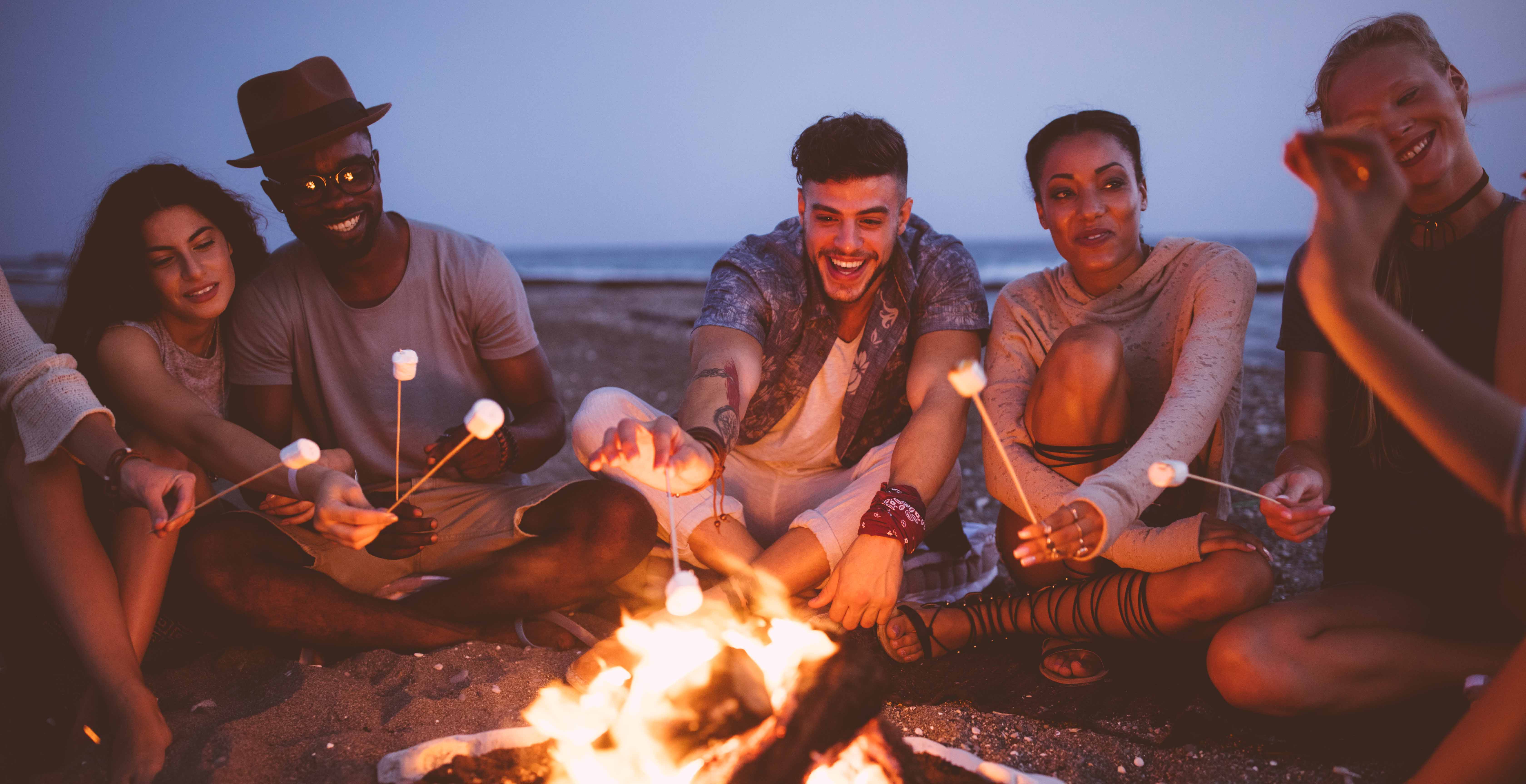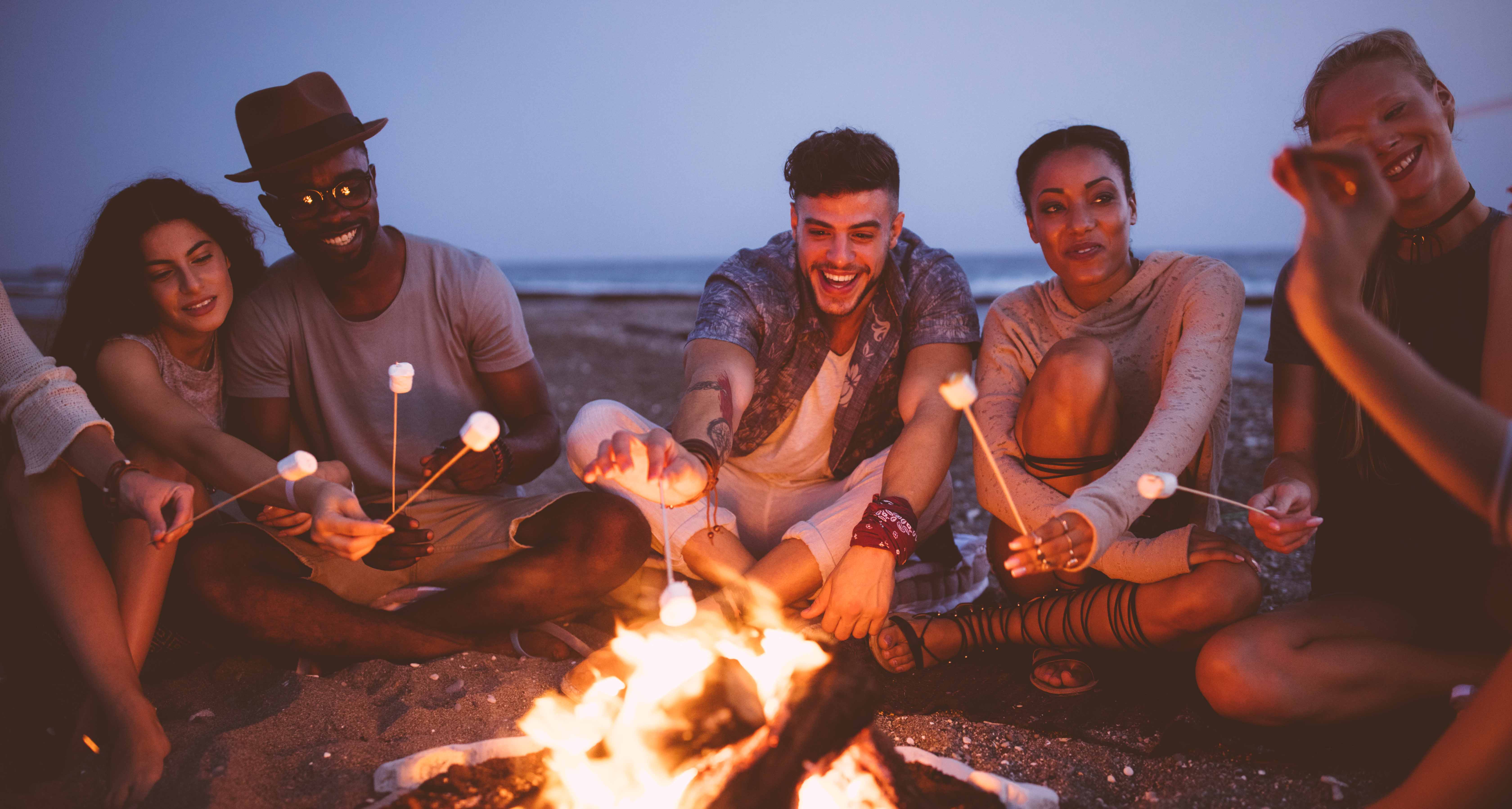Cooking over a campfire


Learning to comfortably cook over a campfire opens up a whole world of culinary exciting possibilities. The best part? All you need are a few basic pieces of equipment and a handful of safety tips to get started. Once you’ve mastered the technique you can say goodbye to burnt campfire baked potatoes and subpar steaks forever!
Choosing the best wood for the job
When it comes to picking the best wood for outdoor cooking it’s important to choose both soft- and hardwood. Softwood has a light density which means it will ignite quickly, making it the perfect choice for kindling. Common examples of softwood include pine, spruce, cedar, and Douglas fir. Hardwood is much denser and once ignited, will burn for a much longer time and at a consistently higher temperature. Hardwoods such as apple and cherry wood will impart a pleasantly sweet taste to food, hickory and mesquite wood will add a delicious smoky flavour.
*Avoid using wood with fungus or mushrooms, noticeable rot, processed wood, and green wood (wood that hasn’t been allowed to fully dry out or season.)
Keep safe with these helpful tips
The saying “a clean campsite is a safe campsite” directly applies to all outdoor cooking, especially when it’s being done over a fire. The firepit and surrounding area should be free of any flammable objects (including large twigs and sticks, dry grass or plants, and overhanging branches.) Never use gasoline or lighter fluid to start a fire; both chemicals are extremely volatile and their fumes can be deadly when inhaled at close range. Refrain from leaving the fire unattended and allow the flames to die down before extinguishing the embers with a large bucket of water or dirt.
Best accessories for cooking over an open flame
Cooking over an open flame doesn’t require very much in terms of kitchen equipment, but there are a few items that will streamline the process.
Cast iron grill: Cast iron grills are the clear winners when it comes to heat retention and distribution. If seasoned properly, cast iron grills are also non-stick (which is particularly beneficial when cooking fresh fruit, seafood, and other fragile ingredients.)
Long-handled tongs: Long-handled kitchen tongs are an essential tool when cooking over an open flame; they allow you to easily orientate the food on the grill without having to get too close to the flames.
Grill basket: Forget fussing with metal skewers, use a grill basket for cut up vegetables, shrimp and other shellfish, and whole fish (especially when cooking delicate fish.)
Dutch oven: A sturdy cast iron Dutch oven is the perfect piece of kitchen equipment for heating up food over an open flame. Like cast iron grills, these all-purpose cooking vessels excel at retaining and distributing heat over long periods of time. Dutch ovens are especially suited to sauces, fruit cobblers and crumbles, oatmeal, braising meat or vegetables, and campfire nachos.
General tips for cooking over a campfire
Keep all ingredients mise en place (French for “everything in its place”) using resealable containers. Careful prepping means you’ll never have to roam very far from the fire or worry about forgetting an ingredient.
Do the actual cooking of ingredients over very hot coals, not an open flame. For hot coals, you’ll need to start the fire at least 45 minutes before you begin cooking (this will give the wood enough time to burn down.) You don’t need a large fire to achieve this effect, begin with a small fire and add wood if needed.
Since the temperature of the coals isn’t controlled the same way an oven would be it’s important to watch your food as it cooks. Turn often using long-handled tongs and be careful of sudden exposure to hot spots.
